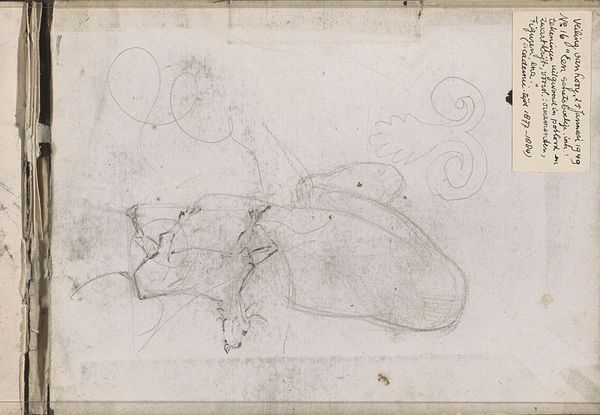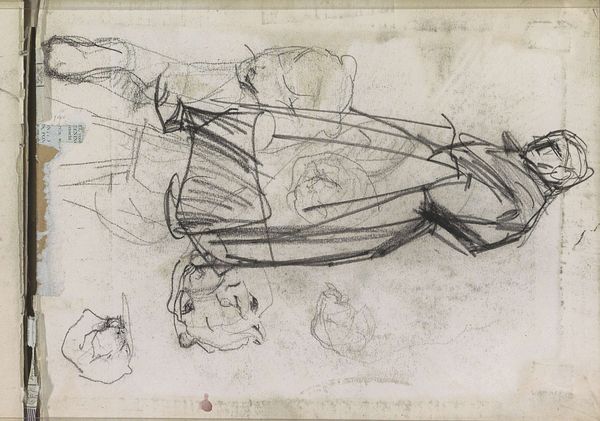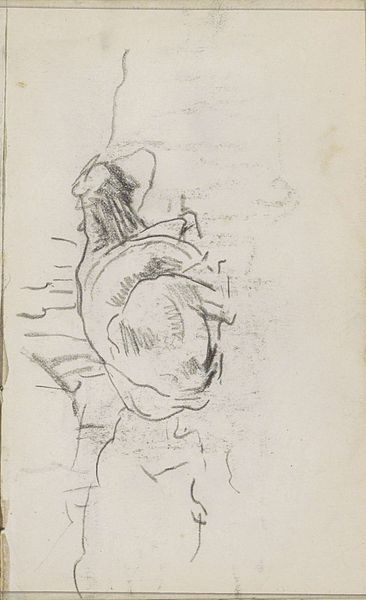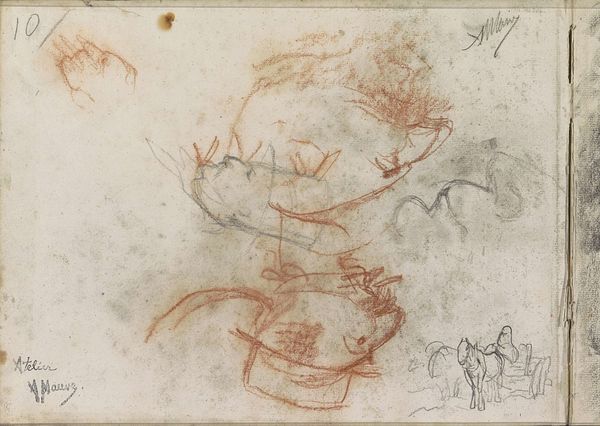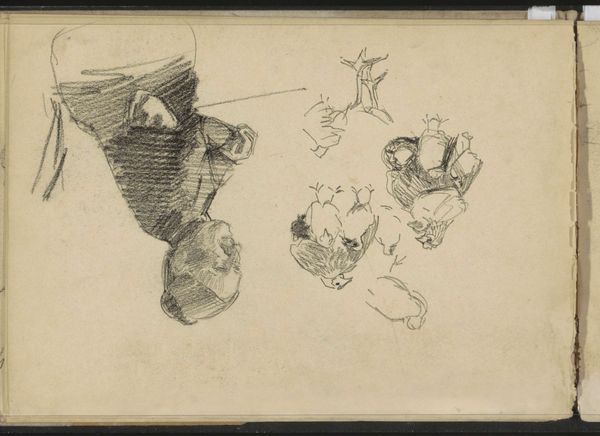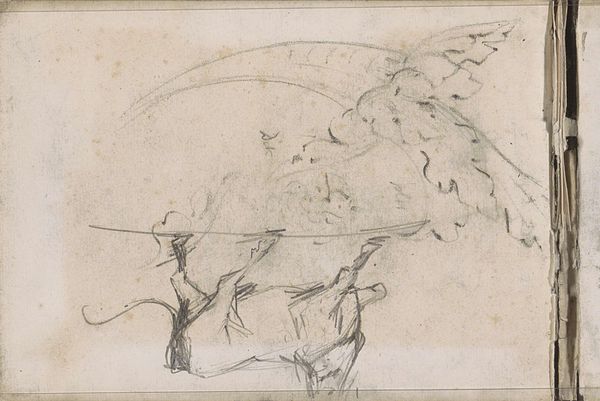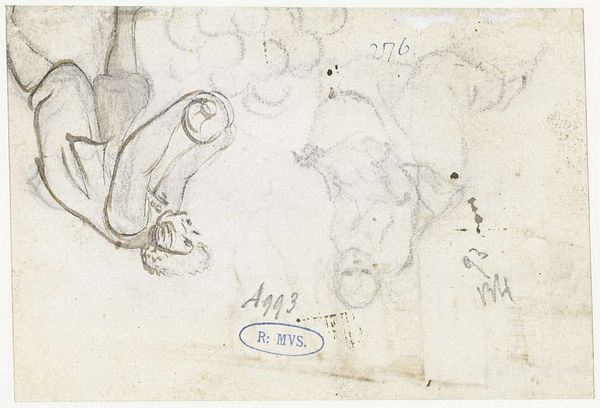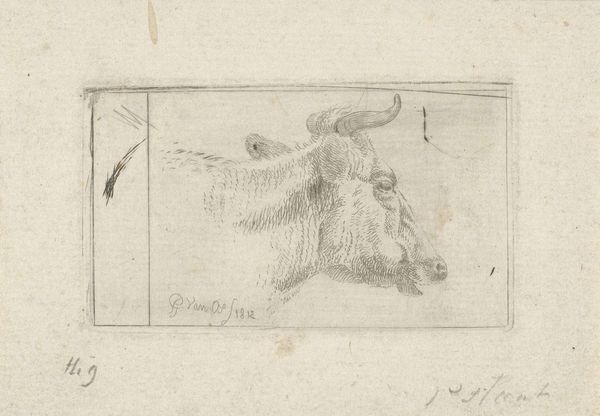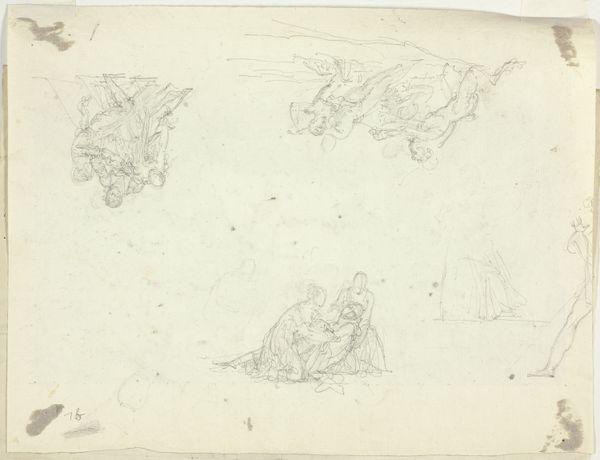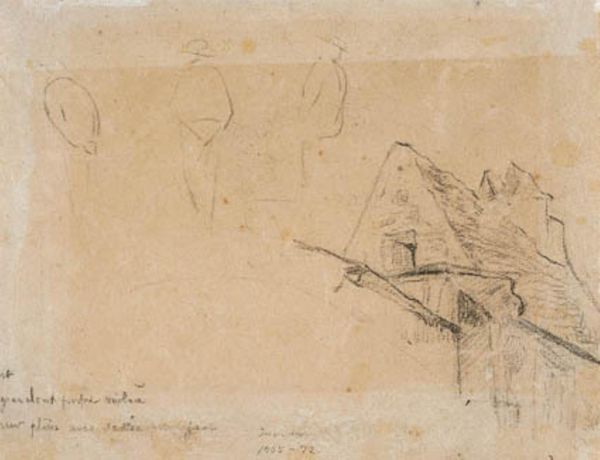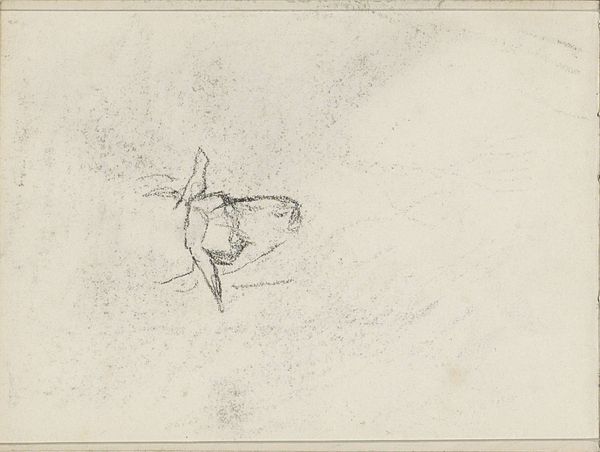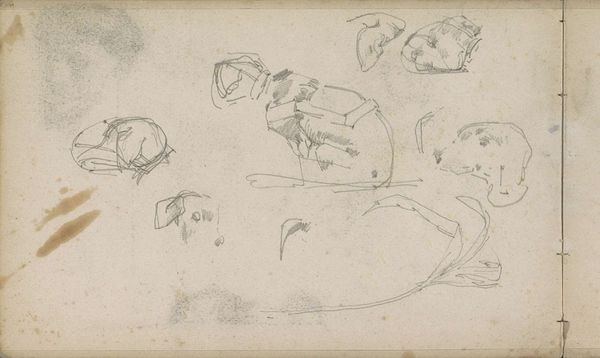
drawing, paper, pencil
#
drawing
#
animal
#
landscape
#
bird
#
paper
#
sketchwork
#
pencil
Copyright: Rijks Museum: Open Domain
Curator: This intriguing sketch is by Isaac Israels, titled “Leeuw, flamingo en mogelijk een leeuwin,” or “Lion, flamingo and possibly a lioness.” It’s likely from around 1892 to 1900 and executed in pencil on paper. Editor: My immediate impression is that it feels incredibly vulnerable. There's a certain rawness to the sketched lines, hinting at fragility and a state of incompleteness. What are your initial thoughts on the image? Curator: Well, considering Israels' place in Dutch art, this drawing offers a glimpse into his creative process. He moved effortlessly between genres, and this work showcases his engagement with exotic animal studies, very common at the time due to colonisation and international travel, set in a broader societal fascination with the natural world. How do you see this work fitting into contemporary narratives? Editor: Precisely, I think we need to see how societal power dynamics are depicted even in nature sketches. What does it mean that these creatures, plucked from their homelands, are presented so… passively? The light pencil strokes almost serve to diminish their presence, suggesting vulnerability within colonial exhibition. It prompts us to examine these seemingly harmless nature studies in a broader context of domination. Curator: It's a fair point, although it’s hard not to acknowledge the technical skill. Note the light and shadow conveyed so deftly with so few lines, even in what appears to be a preliminary study. In thinking about it historically, this might be an insight into a European conception of art. Are you able to bring out other considerations, from an activist perspective? Editor: Absolutely. Even the presumed nonchalance with which these exotic creatures are depicted reinforces a Western gaze—a sense of entitlement in observing and capturing, that echoes societal exploitation and the ongoing debates about cultural appropriation. Perhaps the lion and lioness signify more than mere animals; might they serve as metaphors for power, gender roles, and imposed subjugation? Curator: You make such strong and convincing arguments! It gives this preliminary work a powerful resonance. This lens prompts crucial dialogues. Thank you. Editor: Thank you, I really hope the drawing provokes more and more conversation!
Comments
No comments
Be the first to comment and join the conversation on the ultimate creative platform.
